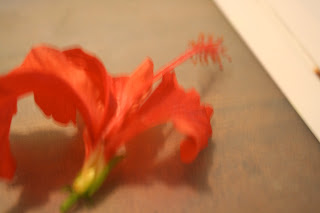I find the technology very interesting and useful. This is because people who suffered diseases or accidents and had lost their organs or body parts, can have better hope of replacing them (organs & body parts).
I also saw an experiment where scientists used a rat to grow a human ear on the rodden's back. I wish I could clone a body part as well. But because I can't, I decided to clone a plant instead.
So, I later searched and watched a video on how to clone plants. While watching it I realized that it is actually very simple. All I had to do was:

1. Look for a plant I want to clone
2. Cut off a branch (with some leaves on it)
It should look like this.
<===
3. Pull/Cut off the big leaves & leave the smaller ones on the branch.
4. Cut the branches into smaller segments (make sure it has at least one small leave on each segments.
5. Look for soil/dirt (in this case I used my family's aquaponics system), place the segment horizontally with the leaf sticking out.
6. The soil/dirt has to be moist at all times if not it will not germinate properly
This was very fun to do. The video also said that it will grow bigger around 12-14 days. I can't wait!








